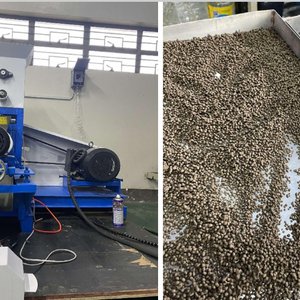Counting salmon lice at Nofima. Photo: Bjarne Gjerde/Nofima
Purposeful selective breeding makes it possible to develop a salmon with increased resistance to lice.
There are currently two methods to combat salmon lice: delousing with medications and biological delousing. However, both methods offer problems. Delousing with medications is widespread, but the lice develop resistance to this. The challenge with biological delousing – using other species wrasse to eat the lice – is a limited supply of wild wrasse. Commercial production of wrasse is therefore a priority area. A vaccine against lice is at the development stage.
“Selective breeding is another method. Trial results from NOFIMA indicate that this may be the way to solve the problems with lice. \"Some salmon families are less likely to get lice, just as some people are less likely to be bitten by mosquitoes,” said Senior Scientist Bjarne Gjerde.
Consequently, the salmon’s resistance to lice may be increased by using fish from families with high resistance to lice as broodstock for new generations of farmed salmon.
Theoretical calculations show that by selecting only for increased resistance to lice, we can expect progress of 24% per generation, and the cumulative effect of 75% over five generations. In practice, the progress will be less than this as selections must also be performed for other traits.
Selective breeding can be an important measure to combat the problems with salmon lice, but it will take a few salmon generations before the effect is noticeable for the individual farmer. Breeding companies that select for increased resistance to lice will currently have higher costs than those that only select for traits that provide direct returns.
“I believe we will be better served if the State either instructs all breeding companies to make a selection for increased resistance to lice or subsidizes those that choose to do so on their own initiative,” Gjerde concluded.







